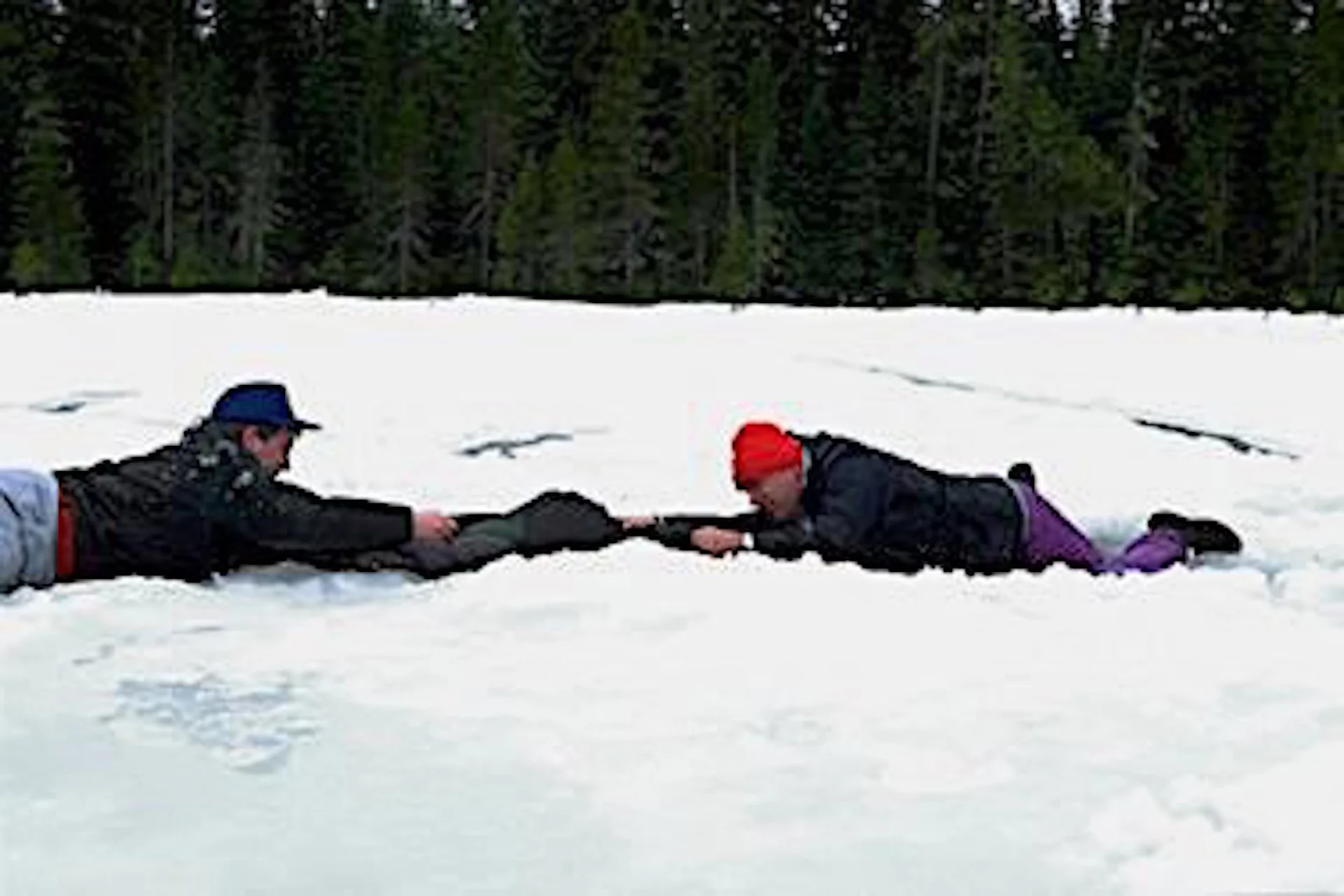
How to survive a fall through the ice this winter
With winter here, now is a good time to get tips before you head out onto the icy waterways, as a sudden emergency can be a matter of life or death.
Across Canada, ice is beginning to cover (or has already) many of our lakes and rivers -- an invitation for many as there are a number of fun activities to partake in on the frozen waterways.
Before you do head out, you need to be prepared should you happen to fall through the ice. Having all the appropriate safety tips will be a matter of life or death.
SEE ALSO: Is it safe? How thick does ice need to be to walk or skate on?
WHAT TO DO IF YOU FALL IN?
The Canadian Red Cross Society has a number of tips that can help you survive a fall through the ice, should it happen. If you are out on the ice alone and in trouble, here is what you should do:
Call out for help
Resist the urge to climb back where you fell in – the ice is weak there
Use the air trapped in your clothing to get into a floating position on your stomach
Reach forward onto the broken ice without pushing down; kick your legs and push your torso onto the ice flat
Once you are back on the ice, crawl on your stomach or roll away from the open area with your arms and legs spread out as far as possible to evenly distribute your weight. Do not stand up
Look for shore and make sure you are heading in the right direction

Having all the appropriate safety tips will be a matter of life or death. (Canadian Red Cross).
IF YOU SEE OTHERS IN TROUBLE
Rescuing another person from the ice can be dangerous. The safest way to perform a rescue is from shore, so if possible avoid going out on the ice. This is what you can do instead.
Call for help. Determine if you can quickly get help from trained professionals like police, fire fighters or bystanders
If you can reach the person using a long pole or branch from shore, lie down and extend the pole to the person in trouble
If you need to go out onto the ice, wear a life-jacket or personal floatation device, and carry a pole or branch to test the ice in front of you. Bring something for the person in trouble to reach out and grab, like a pole, weighted rope or line
When you reach the break in the ice, lie down to distribute your weight and slowly crawl towards them without getting closer to the weak ice than necessary
Remain low, extend or throw your rescue device
Have the person kick while you pull them out
Help the person to a safe place on shore, or where you are sure the ice is thick enough. Call for help
HOW THICK SHOULD ICE BE FOR SAFE TREKKING?
A recent incident in Colorado is a stark reminder about ice safety and checking the thickness of it before venturing out on the frozen waterway.

Ice should be at least 15 centimetres thick or 20 cm thick for a group of people, and at least 25 cm thick for snowmobiling. (Jon Corbin)
So, how do you know if ice is safe enough to walk on?
Sources such as the Canadian Red Cross say that for ice to be considered safe to go out on, it should be of a particular thickness — at least 15 centimetres thick for a person to walk or skate on it, or 20 cm thick for a group of people, and at least 25 cm thick for snowmobiling.
Scott Sutherland, The Weather Network meteorologist and science writer, offers a few insights on how to tell the thickness of the ice on any body of water, which you check out here.
Thumbnail courtesy of the Canadian Red Cross.
Follow Nathan Howes on Twitter.
